Eastern European Customers Receive Training on Biosecurity Awareness
- Category:
- Animal Utilization
- General News
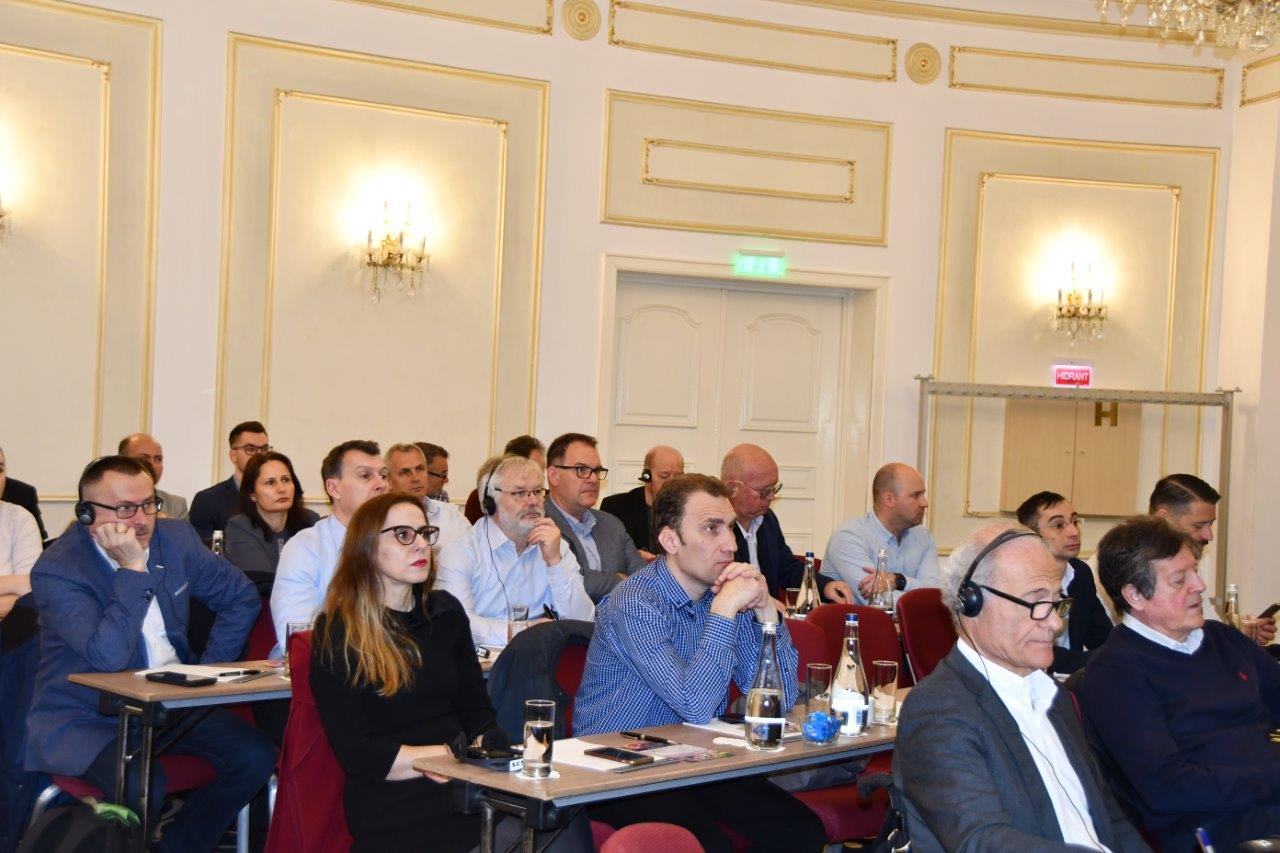
In today’s world, the interconnectedness between countries and industries makes possible the introduction of animal diseases, which will remain an significant threat to the feed and livestock sectors for the global agriculture and animal industries. USSEC invited a team of top feed milling and swine farm biosecurity experts to Bucharest, Romania on April 2 to share the latest research findings regarding the possible transmission of viral pathogens in animal feed ingredients and how to implement relevant measures to prevent the spread of African swine fever in the Eastern European countries with local industries and U.S. soy customers.
USSEC consultants Dr. Megan C. Niederwerder of Kansas State University and Dr. Enric Marco, the past president of the European Swine Health Practitioners Association, discussed the current status of the global and European pig sector and the potential vulnerabilities of transmission of transboundary animal diseases, such as African swine fever and porcine reproductive and respiratory syndrome (PEDV) with more than 60 industry delegates representing more than 80 percent of the commercial swine sector from Romania, Bulgaria, and Poland.
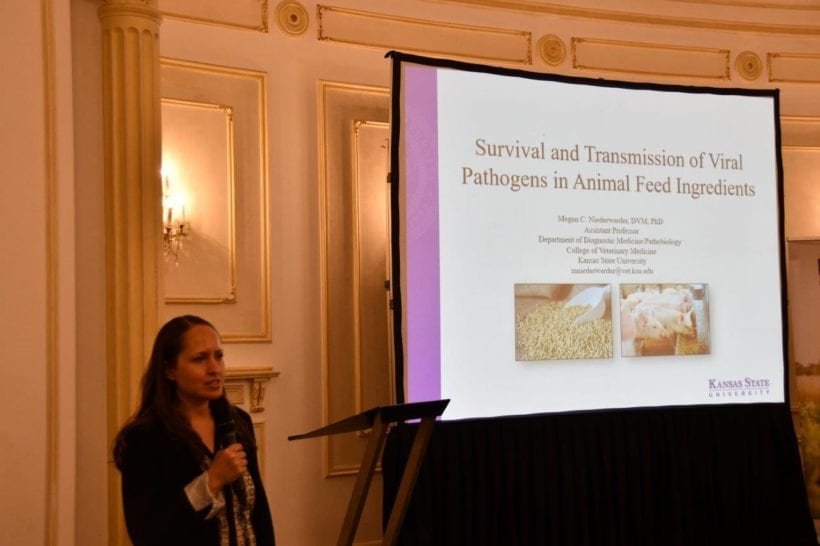
The global swine industry is nervous about African swine fever and other foreign animal diseases. Understanding feed ingredients’ import flow and implementing biosecurity plans in commercial feed mills is critical in the prevention of African swine fever.
“The past years’ research that we focused on at Kansas State University helped us to understand the risk of transmission from feed mill to farm, and on what we can do to prevent or reduce that risk. We recommend to the feed industry to closely work with their feed ingredients’ suppliers to help understand the risks and to understand how those ingredients are being processed,” Dr. Niederwerder said. “Finding solutions to prevent feed mills’ contamination is a collaborative effort between veterinarians, nutritionists, producers and production people. From now on, the feed ingredients suppliers, feed industry, and pork industry have to constantly collaborate to enhance feed biosecurity efforts,” she elaborated.
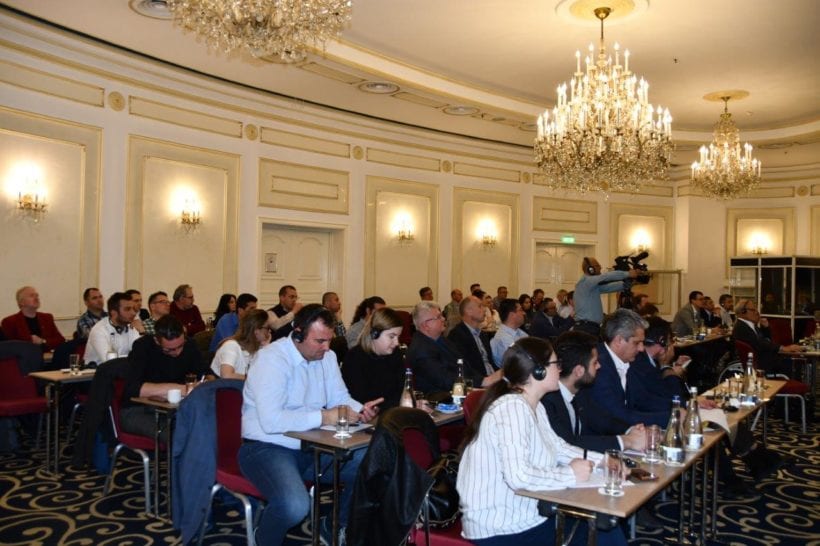
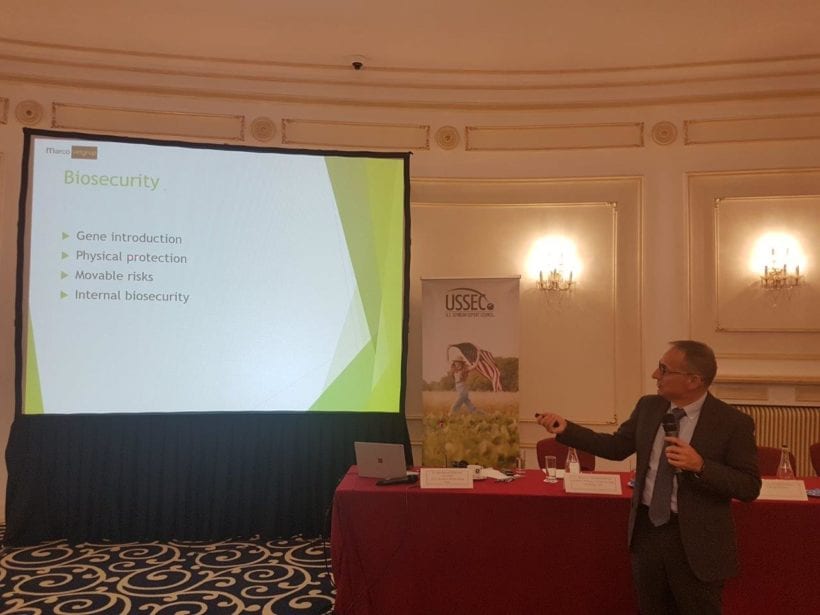
Through his presentations, Dr. Marco taught participants how to update their swine farms biosecurity plans to stop the spread of the disease, as the greatest defense to keep commercial swine herds free of truly devastating swine illnesses. Practical biosecurity must be implemented on any farm and in addition to that, industries should focus on working with feed ingredient suppliers to understand ingredient sourcing and holding times on specific ingredients because the spread of transboundary animal diseases may possibly be linked to feed ingredients.
“The swine production in the EU is suffering a restructuring and reorganization. Some of the traditional producing countries are reducing their production mainly to the difficulties of keeping production in some areas, plus the fact that new generations in industrial areas of Europe do not want to continue farming,” stated Dr. Marco Granell. “This is opening a fantastic opportunity for countries such Romania, which has still a large percentage of its population living in the countryside and where the culture of raising pigs is deeply rooted. Animal health crises as African swine fever put the industry of the country out of the international markets, but at the same time, it brings a great opportunity to reorganize internal production during the period of elimination of the diseases. Backyard production and parallel markets will slowly disappear, as happened in Spain, under the same type of situation back in the 80s. This will be sustained by more professional pork producers. However, to remain on the market for those that are already present in the country, the maintenance of the health status of the farm is key and this is why it is so important to understand what are the key points of biosecurity in reference to ASF, but also to any other disease which can risk the viability of the swine farms.” he concluded.
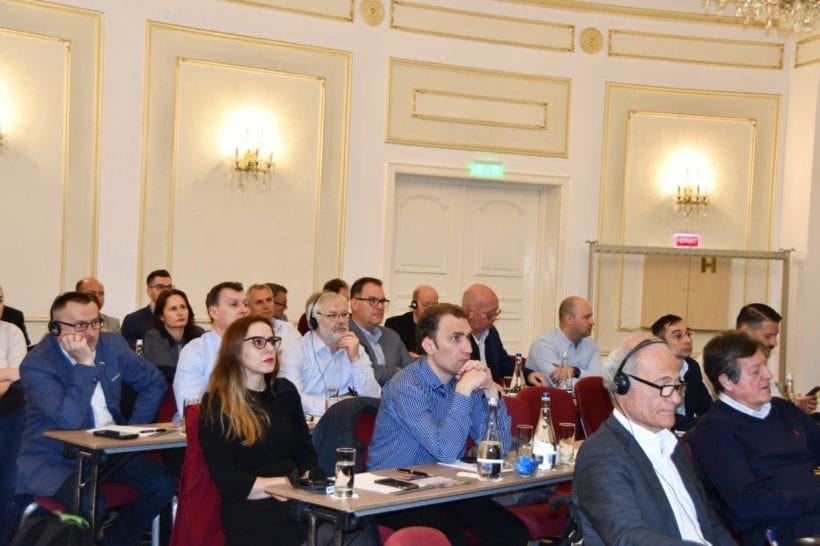
The USSEC event clearly addressed important issues for the swine and feed industries and was of great interest. The organization of those events is greatly appreciated by the local feed and swine industries and is efficient in profiling USSEC and the soy products it promotes.